Films with theme "Documentary films about World War II", sorted by revenue
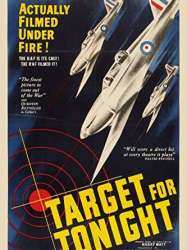
Target for Tonight (1941)
, 48minutesDirected by Harry Watt
Origin United-kingdom
Genres War, Documentary, Historical
Themes Transport films, Aviation films, Documentary films about war, Documentary films about historical events, Documentary films about technology, Political films, Documentary films about World War II
Before the film, several text cards explain bombers and the Royal Air Force chain of command. The film begins with an observation aircraft flying over and dropping a box of undeveloped film. Bomber Command develops the film and analyzes the resulting photographs, which are presented for the audience to see. There has been a massive build-up by German forces in the subject area for the past few months. The film shows the planning of the mission, even detailing how the bomber wing chooses munitions for the task. The weather forecast is expected to be good and the pilots are briefed. The crew of "'F' for Freddie", the bomber that is the focal point of the film, suit up and take off. While over Germany, the crew bombs the target, dead on for one bomb but their aircraft is hit by flak from "faceless" anti-aircraft gunners. The radio operator is hit in the leg and Freddie is the last aircraft to return. Mist covers the water, prompting worry at the Command. Meanwhile, Freddie cannot climb after the flak hit. They are not losing altitude but are in a bad situation. Tension builds in the film until finally, 'F for Freddie' lands. No aircraft are lost and the mission is a complete success.
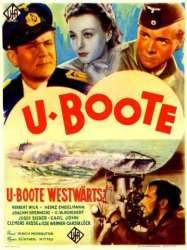
U-Boat, Course West! (1941)
, 48minutesGenres War
Themes Seafaring films, Transport films, Submarine films, Documentary films about war, Documentary films about historical events, Political films, Documentary films about World War II
Actors Herbert Wilk, Heinz Engelmann, Joachim Brennecke, Wilhelm Borchert, Karl John, Clemens Hasse
The short film (48 minutes) opens aboard a U-boat as it returns from a mission. It then follows the crew onshore the day before they ship off for their next mission—meeting their family and sweethearts, spending a last night at a club, and so forth. Then they ship off, soon sighting and boarding a Dutch merchant ship, which they inspect for contraband. The boarding of the ship is shown being done professionally and in a non-confrontational manner. While they are aboard the Dutch ship, a Royal Navy ship spots them and tries to torpedo them, but the U-boat ends up sinking it.

Underground (1941)
, 1h35Directed by Vincent Sherman
Origin USA
Genres Drama, War, Adventure, Romance
Themes Documentary films about war, Documentary films about historical events, Political films, Documentary films about World War II
Actors Jeffrey Lynn, Philip Dorn, Kaaren Verne, Mona Maris, Peter Whitney, Martin Kosleck
Le film raconte l'histoire de deux frères, pendant la Seconde Guerre mondiale, en Allemagne. L'un fait partie de la résistance (underground) et l'autre est un nazi. Celui-ci va peu à peu douter de son engagement idéologique et rejoindre son frère dans la clandestinité.
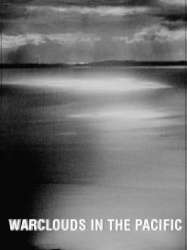
Warclouds in the Pacific (1941)
, 20minutesOrigin Canada
Genres Documentary
Themes Documentary films about war, Documentary films about historical events, Political films, Documentary films about World War II
Actors Lorne Greene
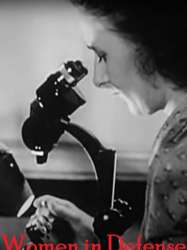
Women in Defense (1941)
Directed by John Ford
Origin USA
Genres War, Documentary
Themes Documentary films about war, Documentary films about historical events, Political films, Documentary films about World War II
Actors Katharine Hepburn
Opening with a shot of a statue of "the pioneer woman who helped win a continent", the film briefly outlines the way in which women could help prepare the country for the possibility of war. Among the various way women could help were:

Words for Battle (1941)
, 8minutesDirected by Humphrey Jennings
Origin United-kingdom
Genres Documentary
Themes Transport films, Aviation films, Documentary films about war, Documentary films about historical events, Political films, Documentary films about World War II
Actors Laurence Olivier

100,000 Cobbers (1942)
, 36minutesDirected by Ken G. Hall
Themes Documentary films about war, Documentary films about historical events, Political films, Documentary films about World War II
Actors Ron Randell, Ann Richards
Five men enlist in the AIF – laid back Bill; World War I veteran Scotty, who pretends to be 37 years old; an "old school tie" businessman Peter, who is running his dead father's business, and whose secretary Miss Lane leaves for overseas service as a VAD; the rebellious "Bluey" William Baker; and Jim, who leaves behind his new wife, Jean.

The Arm Behind the Army (1942)
, 10minutesOrigin USA
Genres War, Documentary
Themes Documentary films about war, Documentary films about historical events, Political films, Documentary films about World War II
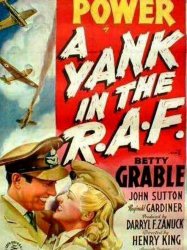
A Yank in the R.A.F. (1941)
, 1h38Directed by Henry King, Robert D. Webb
Origin USA
Genres Drama, War, Action, Adventure, Romance
Themes Transport films, Aviation films, Documentary films about war, Documentary films about historical events, Political films, Documentary films about World War II, Children's films
Actors Tyrone Power, Betty Grable, John Sutton, Reginald Gardiner, Bruce Lester, Ralph Byrd
In 1940, American-built North American Harvard training aircraft are flown to just outside Canada, where they are towed across the border for use by Britain. (The procedure is necessary to avoid violating the Neutrality Acts, as the United States is still neutral.) Cocky American pilot Tim Baker (Tyrone Power) decides to fly across the border to Trenton, Ontario, and winds up in trouble with the military authorities, unconvincingly claiming he was looking for Trenton, New Jersey. Baker ferries a Lockheed Hudson bomber to Britain, pocketing $1,000 for his work.
 , 1h57
, 1h57Directed by Kajirō Yamamoto, Motoyoshi Oda
Origin Japon
Genres Drama, War, Historical
Themes Politique, Documentary films about war, Documentary films about historical events, Political films, Documentary films about World War II
Actors Susumu Fujita, Setsuko Hara, Yatarō Kurokawa, Yuriko Hanabusa, Denjirō Ōkōchi, Eitarō Shindō
Japon, été 1936. Yoshikazu Tomoda et Tadaaki Tachibana sont tous les deux originaires du même village. Tadaaki est élève pilote dans l'aéronavale, Yoshikazu le convainc de persuader sa mère de le laisser lui aussi s'engager dans l'aéronavale. Dès lors, Yoshikazu Tomoda suit un long et éprouvant entrainement pour devenir pilote et se forger le caractère. Après plusieurs années d'efforts et d'abnégation, Yoshikazu est devenu un pilote confirmé. À l’automne 1941, il embarque à bord du Akagi, navire de la flotte qui prend une direction inconnue. Quelques jours plus tard, l'équipage réuni sur le pont du bateau et lecture lui est donné de l'objectif de la mission : la flotte se dirige en direction d'Hawaï afin de couler la flotte américaine du Pacifique. Le 7 décembre 1941, il s'envole du porte-avions lors de l'attaque surprise de Pearl Harbor. De son côté, Tadaaki, lui aussi pilote, participe au large de la côte est de la Malaisie à l'attaque qui voit le cuirassé britannique HMS Prince of Wales et le croiseur de bataille HMS Repulse coulés par les bombardiers japonais.

Berlin Correspondent (1942)
, 1h10Directed by Eugene Forde
Origin USA
Genres Drama, Thriller
Themes Documentary films about war, Documentary films about historical events, Political films, Documentary films about World War II
Actors Virginia Gilmore, Dana Andrews, Mona Maris, Martin Kosleck, Sig Ruman, Kurt Katch
Le correspondant américain Bill Roberts est une épine dans le pied des nazis, son journal dépeignant toujours le monde sur la vérité sur l'Allemagne. Le Capitaine de la Gestapo Carl Von Rau veut boucher la fuite et assigne Karen Hauen, à qui il s’attache au mariage. Roberts obtient ses informations pour ses récits et ses émissions d'un collectionneur de timbres âgé qui, opposé aux nazis par défi, vend les timbres "appropriés" à Roberts et lui fournit les informations. Attirée par Karen, Roberts l'invite dans son appartement où elle découvre son secret. La vieille philatéliste est envoyée dans un camp de concentration, puis Karen apprend qu'il est son père. Elle fait appel à Roberts pour lui demander de l'aide et lui, fidèle au vieil homme et maintenant amoureux de Karen, accepte de l'aider.
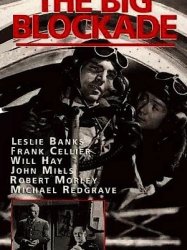
The Big Blockade (1942)
, 1h13Directed by Charles Frend
Origin United-kingdom
Genres Drama, War, Comedy-drama, Documentary
Themes Seafaring films, Politique, Transport films, Documentary films about war, Documentary films about historical events, Political films, Documentary films about World War II
Actors Leslie Banks, Frank Cellier, Will Hay, John Mills, Michael Redgrave, Bernard Miles
This is a propaganda film in which the British strategy of the economic blockade of Nazi Germany is illustrated through a series of scenes and sketches, combined with documentary footage.

The Black Sheep of Whitehall (1942)
, 1h20Directed by Basil Dearden, Will Hay
Origin United-kingdom
Genres War, Comedy
Themes Documentary films about war, Documentary films about historical events, Political films, Documentary films about World War II
Actors Will Hay, John Mills, Basil Sydney, Henry Hewitt, Felix Aylmer, Frank Cellier
When he is forced to vacate the office of his debt-ridden correspondence college, 'Professor' Will Davis (Will Hay) goes to the Ministry of International Commerce at Whitehall in order to confront his one-and-only student, PR man Bobby Jessop (John Mills). To get Davis off his back, Jessop proposes to get him a job at Whitehall. Jessop then leaves in order to fetch a Professor Davys at the railway station. The professor is a leading economist who has returned from a long stay in South America in order to advise the British government on a trade treaty with the South American nations, which could be crucial to Britain's war effort.

Campus on the March (1942)
Origin USA
Themes Documentary films about war, Documentary films about historical events, Political films, Documentary films about World War II
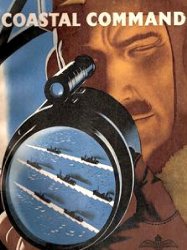
Coastal Command (1942)
, 1h13Origin United-kingdom
Genres War, Documentary
Themes Transport films, Aviation films, Documentary films about war, Documentary films about historical events, Political films, Documentary films about World War II
In 1942, a Sunderland flying boat with Pilot Roger Hunter and Flight Sergeant Charles Norman Lewis as crew, set out on a patrol, flying out of their Scotland air base.
 Connection
Connection